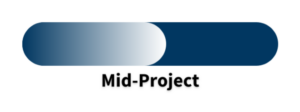The Absence or Presence of Co-Production in Oregon’s Hazard Mitigation/Resilience Planning Processes
This project is looking at various levels of governance used in hazard mitigation planning to better understand who represents the decision-making for hazard mitigation planning along the Oregon coastline.
Our Research:
We conducted an inventory of decision-making bodies involved in natural hazard mitigation along the coast of Oregon. In so doing, we asked the following questions:
The goal of these questions was to clarify the complex processes of hazard mitigation planning in Oregon.
We identified 3 levels of governance used in the creation of hazard mitigation plans, county, local, and special districts. In total, we found 76 different decision-making bodies across these three levels of governance. We then proceeded to inventory individuals who sit on these bodies. We were able to identify 314 individuals on 76 decision-making bodies within the three collaboratories.
Of the 314 Individuals, we managed to locate the contact information of 178. For 70 individuals, we couldn’t find contact information, but often would just have a name. Finally, we were unable to find 66 individuals on public facing websites. We found these individuals on FEMA hazard mitigation plan documents but were unable to locate them online. As we begin to interview individuals, we are also seeking to fill out the demographic profiles so that later we can report on the diverse types of representation of who make decision-making for hazard mitigation planning along the Oregon coastline.

Notes:
We have been conducting interviews of Elected and Appointed officials, Engaged Community Members, First Responders, Local Government Managers and State Coastal Managers, and Business owners. If you live in Oregon and fit under one of these categories and would like to be interviewed, please contact Jordan Totty at jtotty@uoregon.edu.

